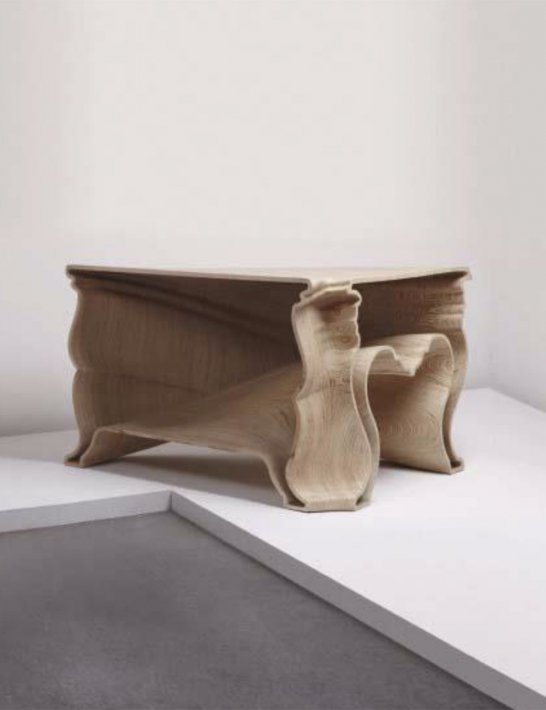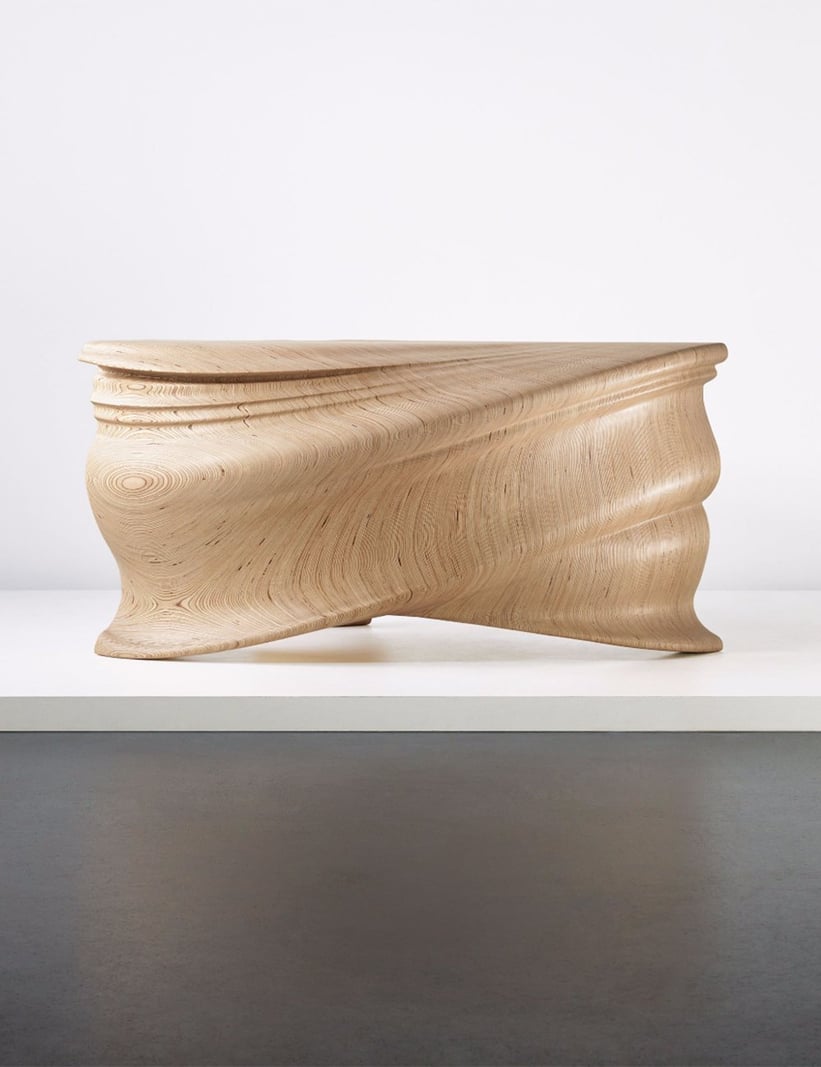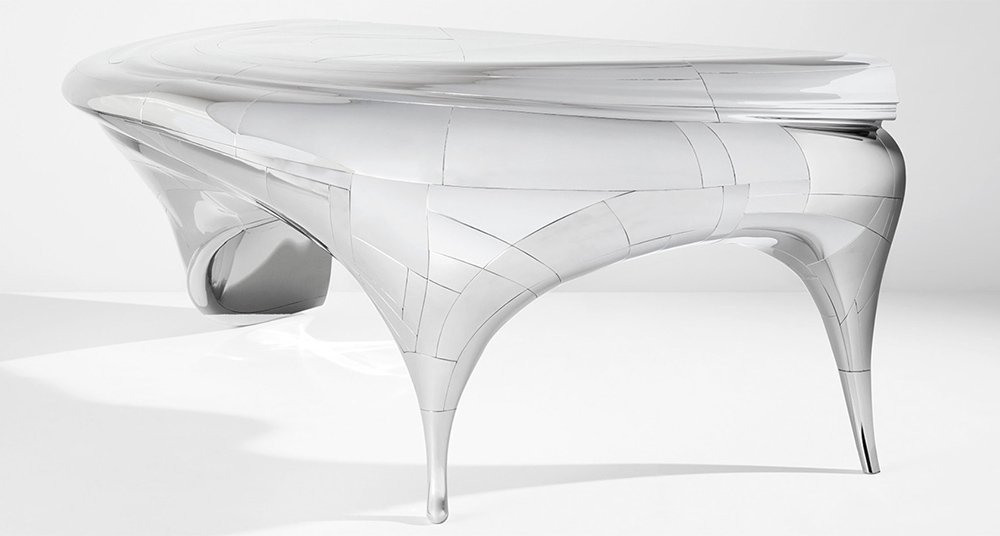

After he graduated from the Design Academy Eindhoven in 2004, Jeroen Verhoeven founded the design studio Demakersvan together with his brother Joep and a fellow student. While researching at the Stedelijk Museum, Verhoeven became interested in antique furniture and began experimenting with their shapes in a virtual space. By digitally twisting the shapes of a classic commode and a dressing table, he created a fascinating rendered object that was then carved out of plywood by a robotic arm. The mesmerising object was christened Cinderella Table and became an instant sensation in the avant-garde design world. Since then, rare examples of his iconic table have sold at auction for anything from 130,000 to 250,000 US dollars.

With his next key work, titled Lectori Salutem, Verhoeven took his concept to the next level. Using stainless steel instead of plywood, he and his brother remixed a table from the famous fin-de-siècle ébéniste François Linke and built it from many individually formed parts by an automotive factory that had some capacity to do so due to the economic downturn of the time. Combing 150 separate steel panels and assembled with 2,300 bolts, Lectori Salutem might be one of the most ambitious furniture pieces of the new millennium, taking inspiration not only from historicism but also from aeronautical and motorsport engineering and Marc Newson’s Lockheed Lounge. Just 20 tables were produced in total and number 12 is now going to be sold at the Phillips Design Auction on 12 December in New York, estimated at 120,000–180,000 dollars. We’re certain that this isn’t the last time we’ll hear the name Jeroen Verhoeven.
Photos via Phillips © 2019







